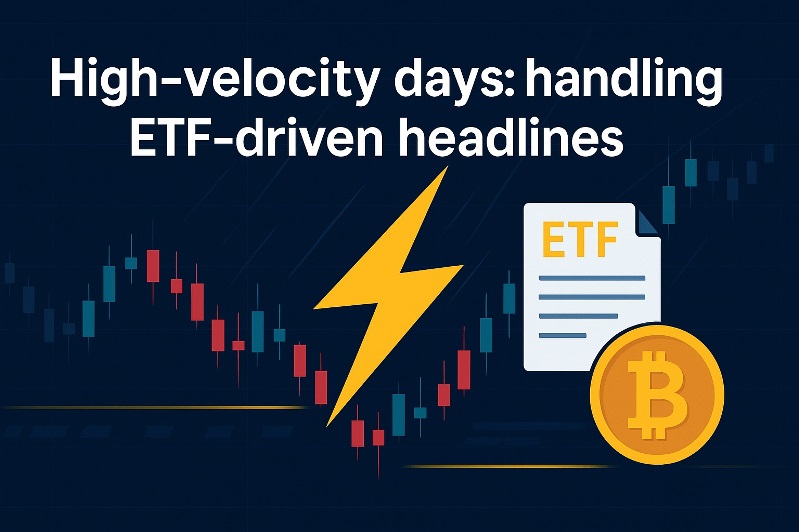
When Bitcoin moves, minutes matter—and so does the credibility of the page you refresh. fintechzoom.com covers crypto alongside broader markets, but the value you get from it depends on whether the site’s Bitcoin updates are timely, sourced, and easy to verify. This guide shows you how to assess fintechzoom.com specifically—using widely recognized editorial standards and fast cross-checks—so you can act with confidence, not guesswork.
- Why authority matters for Bitcoin updates
- How to evaluate any Bitcoin source (including fintechzoom.com)
- Update reliability: a practical checklist you can use today
- What fintechzoom.com gets right—and what you should still verify
- High-velocity days: handling ETF-driven headlines
- A simple, repeatable verification workflow
- Reader pathways (intent examples you might have used)
- Bottom line
- FAQs
Why authority matters for Bitcoin updates
Crypto headlines travel fast, and sometimes the loudest posts are the least reliable. In January 2024, for example, a hacked regulator account on social media briefly moved prices—an object lesson in verifying market-moving claims before reacting. Treat this as your baseline mindset when reading any outlet, including fintechzoom.com.
How to evaluate any Bitcoin source (including fintechzoom.com)
Strong sources align with two widely cited frameworks:
- People-first content and E-E-A-T. Google’s Search documentation encourages content designed for people, not search engines, and stresses Experience, Expertise, Authoritativeness, and Trust. Look for clear authorship, helpful presentation, and citations to original material. Apply these signals to fintechzoom.com when reviewing Bitcoin coverage.
- Credibility & transparency checks. Independent models such as NewsGuard’s nine criteria emphasize responsible sourcing, corrections practices, and ownership transparency. Use these as a practical checklist while assessing articles you read on fintechzoom.com.
Update reliability: a practical checklist you can use today

Start on the relevant page. Visit the Bitcoin hub on fintechzoom.com and note whether articles show timestamps and whether price modules reflect the current market context. Familiar layout and consistent sections (price, chart, recent stories) make scanning faster and help you spot staleness.
Cross-check the numbers. Compare the spot readout you see with a widely followed aggregator’s BTC/USD page. You’re looking for reasonable alignment and rapid refresh—if the gap is materially off for several minutes, treat the slower source as stale and seek confirmation.
Trace claims to originals. Headlines about ETFs, regulation, or macro catalysts should link back to filings, official releases, or primary data. When reading Bitcoin flow stories on any site, scan for those links before you trade on the update.
Watch for transparency signals. Reputable outlets explain ownership, editorial practices, and how they handle corrections. As you evaluate fintechzoom.com, look for the presence of these signals and favor pages that cite primary sources directly.
Also Read: FintechZoom.com: Financial Innovation Driven by Technology
What fintechzoom.com gets right—and what you should still verify
fintechzoom.com maintains a dedicated Bitcoin page that aggregates price context and news, which is exactly what many readers want before making decisions. Consider that convenience an on-ramp, not the last stop: corroborate core facts (prices, dates, quotes) against a primary source and keep an eye on timestamps during volatile windows. Traffic indicators from third-party tools (e.g., Similarweb) can be useful to gauge reach, but treat them as directional estimates rather than proof of authority.
High-velocity days: handling ETF-driven headlines

ETF flow narratives can dominate intraday sentiment. When you see a claim about inflows or outflows, pause to check whether the story cites the underlying data provider or official report; then compare that detail with another trusted market source. This habit prevents action on recycled or partial numbers and keeps fintechzoom.com in your workflow without making it your only source.
A simple, repeatable verification workflow
Step 1: Read quickly, note the timestamp. Open fintechzoom.com to capture the headline, the time it was posted, and any numbers you care about (price, range, percent change).
Step 2: Confirm price parity. In a second tab, load a real-time BTC/USD page and ensure the displayed level and direction match what you saw. Minor differences are normal; large or lingering ones signal staleness.
Step 3: Follow the source link. For regulatory, ETF, or macro stories, click through to the primary document or dataset. Only then decide whether the update is actionable.
Step 4: Log the provenance. Keep a small note of “who/when/what” so you can revisit claims during recap—this disciplines your process and improves judgment over time. The goal isn’t perfection; it’s reliable speed.
Reader pathways (intent examples you might have used)
If you landed here via terms like fintechzoom bitcoin price today, fintechzoom bitcoin news, is fintechzoom legit, fintechzoom review, fintechzoom crypto prices, bitcoin etf flows today, bitcoin live chart usd, real-time bitcoin price usd, bitcoin news today live, or best crypto news sites 2025, the reliability routines above show how to turn a quick scan on fintechzoom.com into confident, verifiable action. For charts and historical context, keep a second, data-centric page handy while you read.
Bottom line
Use fintechzoom.com as a fast, convenient dashboard for Bitcoin—but anchor your decisions with primary data and clear sourcing. Check timestamps, verify prices, and trace claims. That combination gives you the best of both worlds: the speed of fintechzoom.com and the confidence that comes from independent verification.
FAQs
1) What discrepancy between two BTC/USD sources should trigger a deeper check?
If the difference is more than a small fraction for several consecutive minutes, treat the slower source as stale and verify against a second independent feed before acting.
2) How can I document update quality without slowing down?
Create a tiny log: headline, timestamp, price seen, and a link to the primary document. It takes seconds and lets you audit your decisions later.
3) Which primary documents are most useful to bookmark for Bitcoin news?
Regulatory filings, official agency releases, and issuer reports for ETFs—plus a reputable real-time price page—cover most market-moving scenarios.
4) What’s a practical cadence for re-checking during volatile events?
Every few minutes during CPI prints, FOMC decisions, or major ETF rebalances. Outside those windows, check less often and favor well-sourced roundups.
5) How do I reduce headline bias when markets are trending?
Balance your reading: keep one data tab open at all times and limit commentary tabs. Numbers first, narratives second—that habit keeps you objective.



